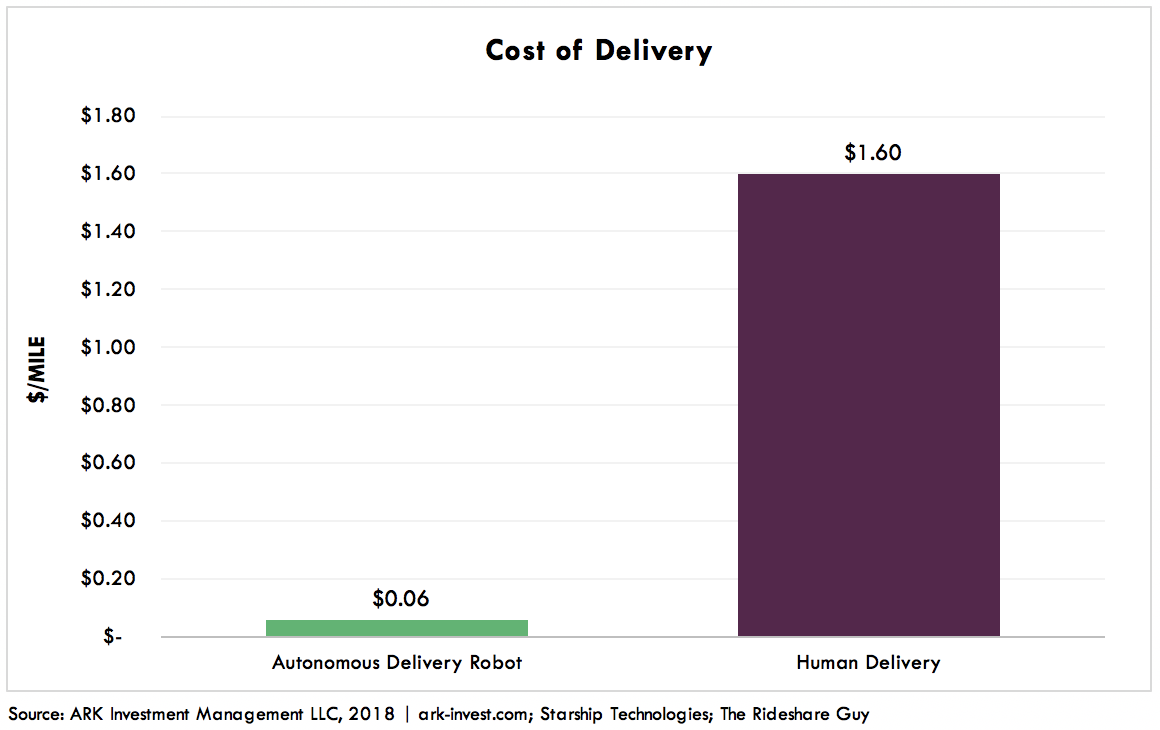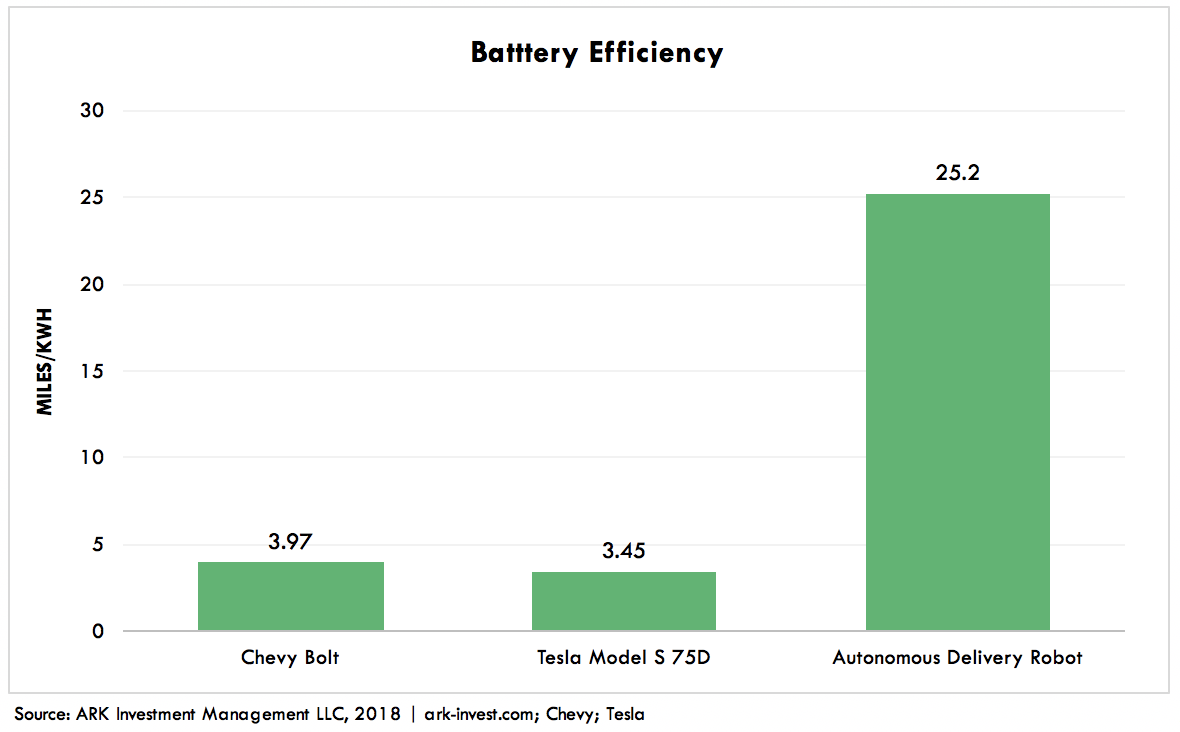
“The primary thing that any technology startup must do is build a product that’s at least 10 times better at doing something than the current prevailing way of doing that thing.”[1] – Ben Horowitz
How could a cooler on wheels traveling four miles per hour change logistics as we know it today? ARK’s research suggests autonomous delivery robots could lower the cost of delivery by 20-fold.
Last mile delivery – the delivery of goods from distribution hubs to the consumer – is the most expensive leg of logistics because it does not submit to economies of scale. The cost per last mile delivery today is $1.60 via human drivers but could drop precipitously to $0.06 as autonomous delivery robots proliferate, as shown below.

Autonomous delivery robots are roughly seven times more efficient than electric vehicles on a mile per kilowatt basis, as shown in the chart below. The major costs for autonomous delivery robots are hardware, electricity, and remote operators. Unlike in electric vehicles, the battery is not the largest cost component in slow moving robots. Air resistance is a function of velocity squared, suggesting that a robot traveling at four miles per hour loses much less energy than a car traveling at highway speeds to air resistance. As a result, rolling robots do not require large batteries, lowering both hardware and electricity costs relative to more traditional electric vehicles.

If rolling robots enable last mile delivery for $0.06 per mile, artificial intelligence could be advanced enough to improve their unit economics. A remote operator responsible for controlling robots in difficult or confusing situations probably will oversee roughly 100 robots, accounting for more than half of the cost per mile, as shown below. As autonomous capability improves, remote operators should be able to manage larger fleets of robots, bringing down the costs per robot.

With low cost last mile delivery, business models previously deemed impossible should emerge. Because the average U.S. household lives 2.14 miles from the nearest supermarket, robots should be able to deliver groceries cost-effectively, and supermarket meal plans could disrupt companies like Blue Apron[APRN] and HelloFresh[HFG.F]. While people delivering general merchandise can’t wait, robots will be able to offer choices in clothing and accessories and wait for consumers to pick and choose. E-commerce companies should be early adopters as they gravitate to last mile delivery, aiming to surpass 9% share of total retail sales.






